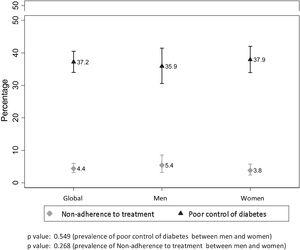
Purpose
To compare the effect of discontinuing bisphosphonate treatment on fracture risk in postmenopausal women at high versus low risk of fracture.
Design
Retrospective, longitudinal and population-based cohort study.
Setting
Barcelona City Primary Care. Catalan Health Institute.
Participants
All women attended by primary care teams who in January 2014 had received bisphosphonate treatment for at least five years were included and followed for another five years.
Intervention
Patients were classified according to their risk of new fractures, defined as those who had a history of osteoporotic fracture and/or who received treatment with an aromatase inhibitor, and the continuity or deprescription of the bisphosphonate treatment was analyzed over fiver year follow-up.
Main measurements
The cumulative incidence of fractures and the incidence density were calculated and analyzed using logistic regression and Cox models.
Results
We included 3680 women. There were no significant differences in fracture risk in high-risk women who discontinued versus continued bisphosphonate treatment (hazard ratio [HR] 1.17, 95% confidence interval [CI] 0.87–1.58 for total osteoporotic fractures). However, discontinuers at low risk had a lower incidence of fracture than continuers. This difference was significant for vertebral fractures (HR 0.64, 95% CI 0.47–0.88) and total fractures (HR 0.77, 95% CI 0.64–0.92).
Conclusion
Our results suggest that deprescribing bisphosphonates in women who have already received five years of treatment does not increase fracture risk. In low-risk women, continuing this treatment might could even favor the appearance of new osteoporotic fractures.


